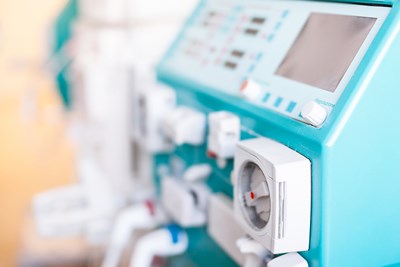Dialysis is a procedure that is required for people who have kidney failure. Normally, your kidneys are responsible for filtering your blood and removing harmful waste and excess fluid through your urine. But when your kidneys are unable to function correctly, dialysis is needed to remove the waste products and excess fluids from your blood. The most common type of dialysis is called hemodialysis and involves diverting your blood to a machine to be cleaned before it is replaced.
What to Expect
Hemodialysis can be performed either at home or in a center. The frequency of hemodialysis can also vary. However, for in-center hemodialysis, it is normal to have three sessions per week at three to five hours each, while daily dialysis is usually performed at home for two or three hours per session.
It is important to note that hemodialysis requires a strict recommendation for the amount of fluids you can drink between treatment sessions. This is because the machine is only able to remove a certain amount of fluid, so if you drink too much it could lead to serious complications, such as excess fluid buildup in your blood, tissues, and lungs.
How the Procedure Works
There are many dialysis centers that are located throughout the United States, so you should be able to travel at your leisure and still maintain your scheduled appointments for your dialysis. Additionally, simpler hemodialysis machines have made the procedure much easier to perform at home. During the session you will be able to sit or lie on a couch, recliner, or bed. You will be able to read, listen to music, watch television, or even sleep.
Before the procedure begins, you will typically need your weight, blood pressure, pulse, and temperature checked. Additionally, the skin covering your access site will need to be cleansed. To begin the procedure, two needles will need to be inserted into the AV fistula vein in your arm and then taped into place. One needle is used to slowly remove blood and transfer to the dialyser or dialysis machine while the other returns the filtered blood to your body after the machine has done its job.
The dialysis machine is made up of a series of membranes that act as filters, as well as a special liquid that is called dialysate. The membranes filter the waste products from your blood before passing them through the dialysate fluid. The used dialysate fluid is discarded while the filtered blood is pumped back into your body.
It is common to experience nausea and abdominal cramps during the dialysis procedure because of the rapid changes in blood fluid levels that are occurring during the procedure. Because of the risk of blood pressure and heart rate changes during dialysis, you will be monitored during the treatment process to make sure that nothing goes wrong.
After the dialysis procedure is complete, the needles will be removed from your arms and a pressure dressing will be applied to the site to prevent excess bleeding from occurring. You will typically be able to go home and resume normal activities immediately after the procedure is complete.



